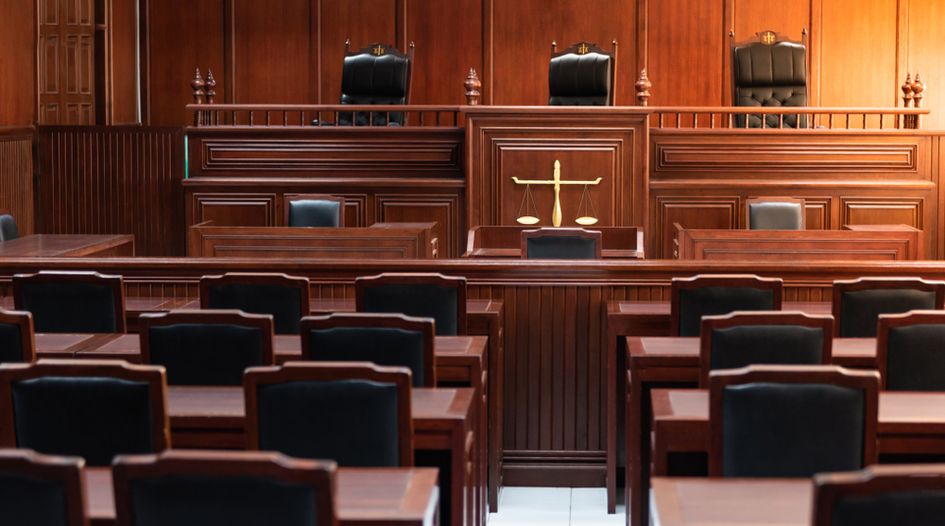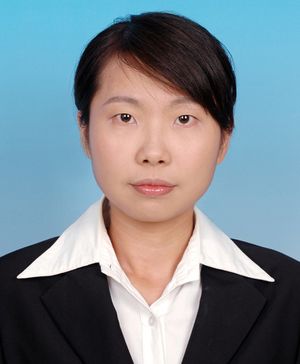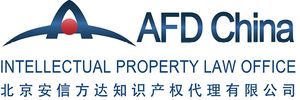High-compensation patent litigation highlights courts’ growing willingness to award significant damages

This is an Insight article, written by a selected partner as part of IAM's co-published content. Read more on Insight
Introduction
On 1 January 2019, the Intellectual Property Tribunal of the Supreme People’s Court of China was officially established to handle nationwide appeals of patent and other technology-related intellectual property and antitrust cases. With the further unification of court judgment standards and the increased judicial protection of intellectual property rights, high compensation cases constantly emerge in judicial practice. According to the recently published Typical Cases of the Intellectual Property Tribunal of the Supreme People’s Court (2022), in the patent and trade secret infringement disputes involving melamine the infringer was ordered to pay a compensation of 218 million yuan ((2020) Zui Gao Fa Zhi Min Zhong No. 1559, (2022) Zui Gao Fa Zhi Min Zhong No. 541).
Pursuant to the provisions of the Patent Law, the determination of the compensation amount for patent infringement includes: calculating based on the actual losses suffered by the right holder due to the infringement or the profits obtained by the infringer from the infringement; where it is difficult to determine the losses suffered by the right holder or the profits obtained by the infringer, a reasonable multiple of the patent licensing fee can be used as a reference for determination; where it is difficult to determine the losses suffered by the right holder, the profits obtained by the infringer, and the patent licensing fee, statutory compensation can be applied, ie, the court, based on factors such as the type of the patent, the nature and circumstances of the infringement, may determine the amount of compensation ranging from 30,000 yuan to 5 million yuan.
How to determine compensation amount and thus effectively protect the rights holder’s interests has always been a focal point of concern for all parties involved. In this regard, we will analyse, based on some typical cases of high compensation in Chinese patent infringement litigation, which kind of claims and evidence put forward by rights holders received support from the courts.
Case introduction
Case 1: Shenzhen Dunjun Technology Co, Ltd v Shenzhen Jixiang Tengda Technology Co, Ltd
The first instance court fully supported the right holder’s claim for compensation of 5 million yuan, and the second instance court upheld the judgment of the first instance.
Shenzhen Dunjun Technology Co, Ltd (Dunjun Company), the patentee, claimed compensation based on the profits obtained by Shenzhen Jixiang Tengda Technology Co, Ltd (Tengda Company) ((2019) Zui Gao Fa Zhi Min Zhong No. 147) from the infringement, and submitted the following evidence:
- evidence of offline sales of the accused infringing products;
- evidence of online sales of the accused infringing products from multiple platforms, including: Dunjun Company’s purchases of the accused infringing products from Tengda Company’s official flagship stores on different dates on JD.com and Tmall.com, with images, prices, cumulative review counts and other information about the accused infringing products;
- information from Tengda Company’s official website;
- printed copies of Tengda Company’s official flagship store on JD.com, showing an increase of several thousand in cumulative review counts compared to previous records; and
- other evidence showing information about the sales, offer for sales and reviews of the accused infringing products on different online platforms.
In addition, Dunjun Company requested that the first instance court order Tengda Company to submit financial records and documents related to the accused infringing products. The first instance court, based on the trial proceedings, legally ordered Tengda Company to provide complete information and complete financial records regarding the production and sales of the accused infringing products. However, Tengda Company refused to provide them without justifiable reasons. Pursuant to the provisions of relevant judicial interpretations, the first instance court, considering the evidence provided by Dunjun Company and Tengda Company’s refusal to provide relevant financial records, supported Dunjun Company’s claim for compensation.
In the second instance proceedings, the Supreme People’s Court upheld the judgment of the first instance and affirmed that the compensation amount determined in the first instance judgment was appropriate.
Case 2: Synthes Co, Ltd v Dabo Medical Technology Co, Ltd, et al
The Supreme People’s Court fully supported the right holder’s claim for compensation of over 20 million yuan ((2021) Zui Gao Fa Zhi Min Zhong No. 148).
Synthes Co, Ltd (Synthes Company), the patentee, claimed that the compensation amount should be determined based on the infringer’s profits and submitted the following evidence:
- Dabo Medical Technology Co, Ltd’s (Dabo Company) ‘Prospectus for Initial Public Offering of Shares (Draft)’, which includes information on the company’s main products, sales situation, main sources of operating income and gross profit margins of the main products;
- Dabo Company’s ‘Prospectus for Initial Public Offering of Shares’, which records information about operating profit and the composition of main operating income, discloses the receipt of the lawsuit materials from Synthes Company in this case, and also provides explanations regarding the quantity, specifications, sales amount, and proportion and gross profit of the accused infringing products;
- ‘Dabo Medical: 2017 Annual Report’, which states the annual revenue and gross profit of trauma-related products;
- ‘Dabo Medical: 2018 Semi-Annual Report’, which indicates that intramedullary nails for trauma-related implantable consumables are the company’s main products and provides information on the annual revenue and gross profit margins of trauma-related products; and
- evidence of Dabo Company’s sales through other companies on the Derong Medical Equipment Mall website, showing the sales quantity and selling price of the accused infringing products.
The Supreme People’s Court held that, as Synthes Company claimed to calculate the compensation amount based on the infringer’s profits and had adduced preliminary evidence regarding the infringement scale, and Dabo Company had no justifiable reason for refusing to provide corresponding evidence or materials regarding the infringement scale, which resulted in the inability to accurately determine the factual basis for calculating the infringer’s profits, the Court may give no consideration to Dabo Company’s arguments, such as that the contribution rate of the involved patent to its infringing profits should be taken into account. The Court also held that, although the calculation process based on the evidence and arguments presented by Synthes Company, considering factors such as sales amount and profit margin, may not be entirely precise, it can still demonstrate that Dabo Company’s profits also include profits generated through other sales channels and the sale of other infringing products; thus, Dabo Company’s actual profits from the infringement had a high likelihood of exceeding 20 million yuan, even if the contribution rate of the patent was taken into consideration. Dabo Company objected to the amount claimed by Synthes Company but refused to provide the evidence it held. Therefore, it can be inferred that the amount claimed by Synthes Company was reasonable.
Analysis and recommendations
Based on the evidence presented by the rights holder and the Court’s determination in the aforementioned cases, we recommend that rights holders consider the following points in patent infringement litigation.
Actively applying discretionary compensation method
During the press conference on the intensified judicial protection of intellectual property rights held in October 2013 at the Supreme People’s Court, Jin Kesheng, then the deputy chief judge of Civil Adjudication Tribunal No. 3, defined discretionary compensation methods as follows: on the basis that there is evidence supporting some of the data required for calculating compensation, the Court may exercise discretionary power according to the particulars of the case to determine the additional data required for calculating compensation, thereby determining a fair and reasonable amount of compensation. In July 2016, during the National Symposium on Intellectual Property Trial Work and the Promotion Meeting on the Three-in-One Intellectual Property Trial held by courts nationwide, Vice President Tao Kaiyuan of the Supreme People’s Court further emphasised the importance of skilfully applying discretionary compensation methods based on specific evidence to determine actual losses or infringement profits, thereby further enhancing the rationality of calculating damages.
On the one hand, owing to the fact that compensation based on actual losses or infringement profits is not subject to the statutory compensation limit, the discretionary compensation method that determines actual losses or infringement profits based on specific evidence can result in higher compensation amounts than the upper limit of statutory compensation. On the other hand, discretionary compensation relies on the evidence submitted by the parties, and therefore, even if the compensation determined based on actual losses or infringement profits falls within the range of statutory compensation, if the rights holder applies for discretionary compensation and provides evidence, it can provide a more sufficient basis for the court to determine a reasonable compensation amount, which helps to avoid relying solely on the judge’s subjective judgment for determining the amount of compensation.
Therefore, to increase the final amount of compensation and provide a basis for the court to determine the compensation amount, it is recommended that the rights holder prioritises the application of discretionary compensation and provides evidence on the losses suffered by the rights holder or the profits obtained by the infringer.
In both of the aforementioned cases, the rights holders argued for calculating the compensation amount based on the profits obtained by the infringers and provided evidence to support their claims. For example, in the above Case 1, the rights holder not only submitted evidence demonstrating the sale of the infringing products on various online and offline platforms but also gathered data on the cumulative increase in the count of reviews of the infringing products by accessing the same sales platform during different periods, thereby proving that the actual scale of infringement by the infringer exceeded the compensation range claimed by the rights holder.
The comprehensiveness and diversity of evidence supporting the claimed compensation amount
The rights holder should provide evidence as comprehensively and with as much detail as possible based on the available evidence they can obtain.
In Article 31 of the Several Provisions of the Supreme People’s Court on Evidence in Civil Intellectual Property Lawsuits, it is stated that:
Financial books, accounting vouchers, sales contracts, purchase lists, bills of sales, annual reports of listed companies, prospectuses, website or promotional materials provided by the party; transaction data stored in equipments and systems; commodity circulation data statistics from third-party platforms; evaluation reports; intellectual property licensing contracts; and records from market supervision, tax, and financial departments, etc.,can be used as evidence to prove the claimed amount of compensation for intellectual property infringement.
In many cases, the accused infringers often promote their revenue, market share and sales information on their websites or in their promotional materials. Furthermore, if the accused infringers are listed companies or companies preparing for initial public offering, the records in their annual reports, prospectuses, quarterly or annual financial reports and other relevant documents can serve as evidence to support the claimed amount of compensation.
For example, in the above Case 2, the rights holder submitted various pieces of evidence, such as sales data obtained from third-party websites, the infringer’s self-disclosed prospectus, annual reports and website promotional content to support the rights holder’s claim for the compensation amount.
Use of the barrier to evidence system
Pursuant to Article 27 of the Interpretation (II) of the Supreme People’s Court on Several Issues concerning the Application of Laws in the Trial of Patent Infringement Dispute Cases:
if the rights holder finds it is difficult to determine the actual losses suffered as a result of the infringement, the Court shall, in accordance with Article 65(1) of the Patent Law, require the rights holder to provide evidence of the benefits obtained by the infringer from the infringement; if the rights holder has already provided preliminary evidence of the benefits obtained by the infringer, while the account books and relevant documents related to the patent infringement are primarily in the possession of the infringer, the People’s Court may order the infringer to provide such account books and documents; if the infringer, without justifiable reasons, refuses to provide or provides false account books or documents, the People’s Court may determine the benefits obtained by the infringer from the infringement based on the claims of and the evidence provided the rights holder.
Where rights holders have already provided preliminary evidence of the benefits obtained by the infringers, they can apply to the Court for the retrieval of account books and relevant evidence that are controlled by the infringers and are related to the patent infringement. In practice, it is rare for the accused infringers to submit account books and data that meet the Court’s requirements. Once the Court orders the accused infringers to submit the relevant account books and data possessed by them, but they refuse to do so without justifiable reasons, it will be considered as hindering the burden of proof. In these cases, the Court may support the compensation amount claimed by the rights holders based on the rights holder’s assertions.
Summary and outlook
This article provides examples and analysis of how rights holders in patent infringement litigation in China can provide evidence on the compensation amount and also offers recommendations.
In high compensation cases, while it is necessary for the rights holders to provide sufficient evidence to prove the infringement facts and the extent of the damages, the courts’ increased intensity in awarding damages is also a crucial factor. In a report on the implementation of the Decision of the Standing Committee of the National People’s Congress on Several Issues concerning the Litigation Procedures for Intellectual Property Cases including Patent Cases released by the Supreme People’s Court on 27 February 2022, the following is mentioned.
The amount in dispute is increasing, with more cases involving claims for compensation of over 100 million yuan. Courts have effectively increased the intensity of damage compensation. In the ‘Vanillin’ technology secret infringement case, compensation of 159 million yuan was awarded ((2020) Zui Gao Fa Zhi Min Zhong No. 1667). In the ‘Kabo’ technology secret infringement case, maximum punitive damages (ie, five times the compensatory damages) were imposed, amounting to over 30 million yuan ((2019) Zui Gao Fa Zhi Min Zhong No. 562). The average amount of compensation awarded in first instance judgments of technology-related intellectual property infringement cases nationwide has increased by 147.1% compared to the amount before the establishment of the intellectual property tribunals of the Supreme People’s Court.
Intellectual property cases involving foreign parties are handled fairly and justly. In the ‘NX’ computer software infringement case, the court supported the foreign rights holder’s claim for compensation based on the price of genuine software ((2020) Zui Gao Fa Zhi Min Zhong No. 155). In the ‘Intramedullary Nail with Locking Screw’ invention patent infringement case, owing to the infringer’s refusal to submit account books, the court revised the judgment to fully support the foreign rights holder’s claim for compensation of over 20 million yuan (ie, the aforementioned Case 2), which helped create an open, fair and just environment for technological development in China.
It is believed that with further strengthening of judicial protection for intellectual property rights in China, the interests of rights holders will receive more comprehensive and effective protection in the future.






